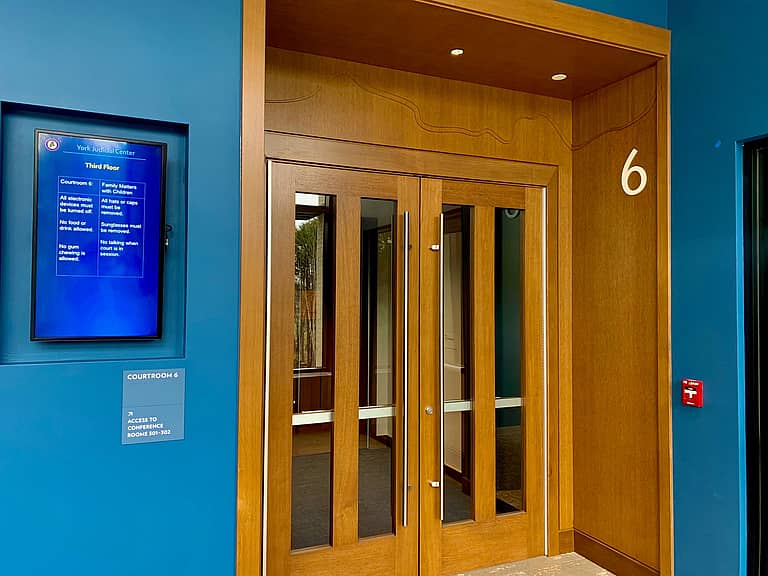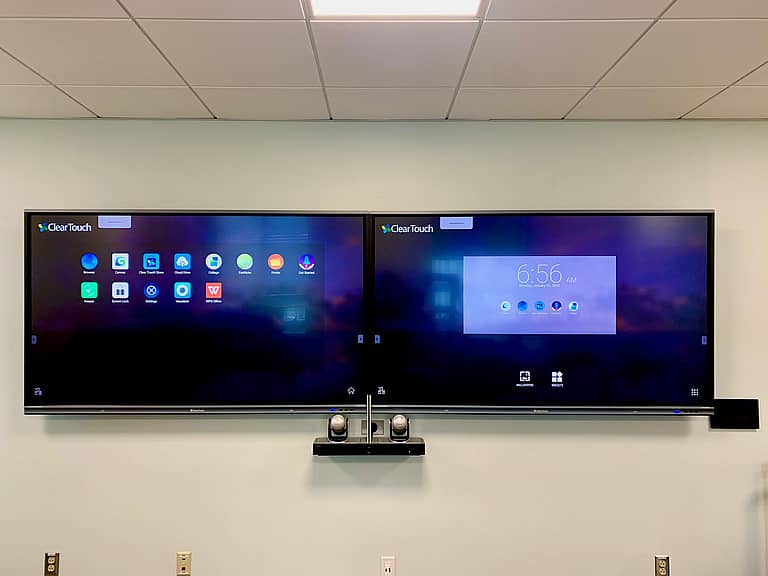Live entertainment brings people to a special place. They can escape from their day-to-day activities and scream, jump, and high-five their way through a thrilling experience. But to maximize the emotional and passionate impact of a live experience, you need a stadium sound system that delivers the clarity and fidelity audiences have come to expect. Modern sound systems for stadiums are built on cutting-edge technologies designed to provide dynamic, soul-stirring experiences.
Pro AV Systems has built and fine-tuned solutions for stadium sound systems using leading products for maximum impact. Here’s a dive into what drives an effective sound system for a stadium and some examples of how Pro AV Systems has delivered.
Leveraging Immersive Technology and Techniques to Improve the Audience’s Experience
To create an immersive experience for your audiences, you need high fidelity, spatial audio design, dynamic control over the system’s performance, and a seamless integration of visual elements. Here’s how these work and some examples of how Pro AV has leveraged them to improve stadium sound systems.
Understanding EQ Principles for Stadium Sound Systems
An audience’s aural experience can only be as good as the original audio quality. By starting with high-quality sound, you make it easier to mitigate other factors, such as echo and reverb, that could degrade the result.
For high-fidelity sound, a diverse range of frequencies must reach your audience’s ears, regardless of where they’re sitting or standing. For example:
- Bass frequencies. Basslines in songs, drum kicks, and even some baritone voices have a lower frequency range, between 20Hz and 250Hz. This means they can sound very different depending on how close the listener is to the speaker. If you’re too close, the full range of bass sounds might not be audible because all the sound waves haven’t completed their full cycles. Higher frequencies may sound muddled if you’re too far, especially if the bass is set too high.
- Midrange frequencies. Most human voices and instruments, such as pianos, horns, and synthesizers, fall in the midrange between 250 Hz and 4 kHz. Therefore, getting the mids just right can make the difference between clear vocals and muffled announcements. For example, in a football stadium sound system, getting the midrange just right makes it easier for fans to hear the referee’s calls and announcers’ descriptions of what yardline the offense has achieved.
- High frequencies. High frequencies, between 4 kHz and 20 kHz, make it easier for fans to distinguish the details in vocals, music, and spoken announcements. For instance, an “f” and “s” sound may be indistinguishable without adequate high-frequency amplification.
Leveraging High-Fidelity Audio to Deliver Powerful Experiences
When you choose equipment that provides clear sound across various frequencies, the audience gets a more natural, comfortable, and exciting experience.
For instance, Pro AV Systems carefully chose the ideal components for a challenging aural environment: the Town of Chelmsford Hockey Rink. Like many rinks, Chelmsford’s soundscape was wrought with reverberating surfaces, listening angles that were difficult to navigate, and audiences in a variety of positions in the stadium.
For the building’s perimeter, Pro AV Systems used 19 Bose DM8S full-range loudspeakers. These have a frequency range of 52 Hz to 20,000 Hz, making everything from the deepest rumble to a gentle whisper equally clear. With 19 DM8S units aimed at them, the audience members can hear music and announcements clearly, no matter how noisy the action on the ice is.
At the same time, skaters on the ice and those in the student section needed to have their own unique audio experience. To meet this need, Pro AV Systems used Bose AMM112 speakers and a Bose MB210-WR subwoofer. The AMM112 units have a frequency range of 60 Hz to 20,000 Hz. Teamed up with the MB210-WR sub, which ranges from 37 to 180 Hz, the system allows students and those in action on the ice to enjoy a unique yet equally hi-fi experience.
Solving the Coverage Puzzle: Effective Aural Experiences for All Attendees
Where someone sits shouldn’t dictate the aural experience. Ensuring this is the case depends on careful speaker placement. For optimal speaker positioning, Pro AV Systems uses:
- Spatial modeling. Software can represent the dimension and shape of a stadium sound system environment. The program includes the locations of walls, ceilings, rafters, and other structural elements, as well as seating.
- Material considerations. Each material has unique absorption and reflection properties that impact how sound reaches the audience’s ears. For instance, cushioned chairs—as well as human bodies—often absorb a significant portion of higher frequencies. As we position speakers, we need to take this into account.
- Acoustic analysis. Analyzing the acoustic performance of a space enables audio engineers to ensure the audience hears what it should. For example, reverberation times can impact the clarity of both reverberated frequencies and those they’re in phase with. In-phase frequencies have waveforms that align, amplifying the signal. By manipulating a space’s acoustics, you can control potentially problematic phase issues.
Pro AV Systems overcame spatial challenges in the Merrimack College Lawler Ice Arena. The ceiling is abnormally low, making it difficult to manage the depth of bleacher height about that of the ceiling.
Pro AV Systems used acoustic modeling to digitally test more than a dozen loudspeaker designs. Using the data generated, the team chose Bose ArenaMatch and DesignMatch loudspeakers. They then augmented the solution with Acoustic Fulcrum subwoofers and powered the system using Bose PowerMatch amplifiers. This proved to be a better solution than using a single speaker to serve an entire area.
The result was a frequency range between 35 Hz and 16 kHz for all attendees, putting it on par with an NHL arena.
Customizable Audio for Immersive Experiences
The power of customization is at the center of a school auditorium or indoor or outdoor stadium sound systems. And the lifeblood of a customizable is versatility. The aural landscape for a concert differs from what audiences expect from a basketball game or a conference held in the same space. To achieve audio agility, a space needs:
- Speakers that can project a wide range of frequencies without sacrificing quality as volume increases or decreases
- Dynamic speakers that you can control using software when you have to optimize the audience’s experience
- Scalability, which often depends on using a solution that can integrate with other audio tools
Bose ArenaMatch is a good example of an audio solution that enables convenient customization. In addition to having a wide frequency range, these speakers can be controlled using software. As a result, you can dictate exactly how you want them to sound based on the music, vocals, or sound effects you need to project. And because ArenaMatch integrates well with other Bose components, it’s easy to scale up your solution if you need to serve sound to a larger or more dispersed audience.
Leveraging Amplification to Bring Audiences Closer to the Action
Whether it’s the swish of a basketball ripping through the nylon, the ding of a football glancing off the uprights, or the bassy trumpet of a hockey goal horn, there are many sounds you can amplify to get audiences’ pulses pumping.
In some situations, a wireless mic can do the trick. Attaching a lavalier mic to the underside of a basketball rim, for instance, can make both the swish of a three-pointer and the clang of a brick crystal clear for fans. You simply route the lav mic to a receiver attached to your mixer, assign it to a channel, adjust the volume and EQ, and send it out to your speakers for everyone to hear. To fine-tune your result, you can use the EQ to boost frequencies around 250 Hz, making each swish resonate in fans’ chests like a subtle kick drum.
Naturally, adjusting audio settings plays an even more pivotal role when tuning your space for musical performance. You can even assign presets you can trigger in a fraction of a second to accommodate a female instead of a male singer, a viola instead of a violin, or a trumpet instead of a tuba.
Create Deeper Fan Experiences with Pro AV Systems
Whether you’re shooting for a sense of grandeur, a more enthralling spectator experience, or an intimate connection between a performer and fans, using the right components and tuning them accordingly results in more immersive, transformational experiences. By using flexible, high-fidelity speakers and an adaptable sound system, you empower your soundscape with the agility it needs to meet a range of fan demands. Also, you can make any space an ideal soundscape using audio engineering and acoustical modeling.
Pro AV Systems has the engineering expertise and technological partners to design an ideal experience for your audiences, as well as source all the equipment you need. Connect with us today to learn more about our solutions.




